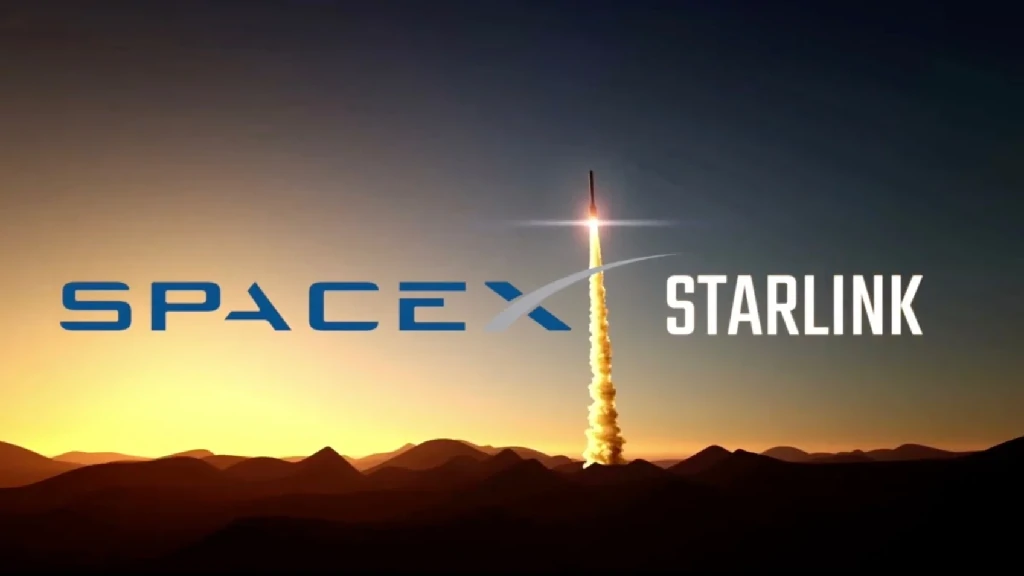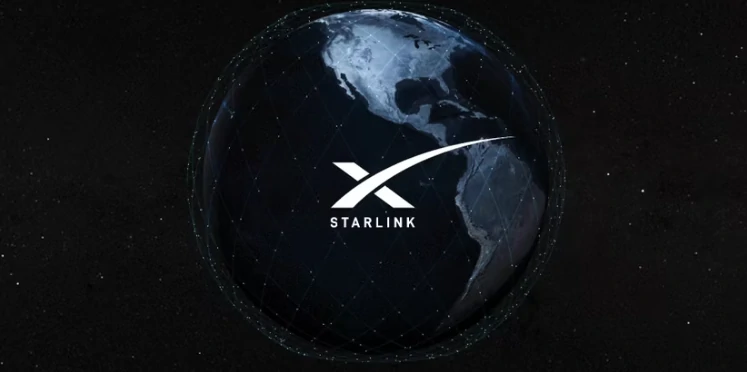Starlink is a satellite internet service owned and operated by SpaceX and its dramatic shift towards making internet connections universal, particularly in regions that have been less served or unserved. Yemen is a country struggling with armed conflict, and its economical situation puts the country at great challenge in terms of access to the Internet. Starlink is one of the plausible remedies for these disruptions, as it covers the area with the help of low-orbit satellites providing internet connection. This article focuses on the ways Starlink changes internet provision in Yemen and its opportunities and challenges.
What is Starlink?
Starlink is SpaceX’s internet service via satellites; it’s a broadband service that enables every corner of the world, especially where fast and efficient infrastructure such as fiber optics and cellular networks are hard, if not impossible, to assemble. The service involves using a group of low-earth orbit (LEO) satellites that offer consumers higher speeds and less delay compared to conventional satellite services. This has made Starlink a trend setter in providing internet connectivity in many developing world nations, such as Yemen.
The Internet Challenges in Yemen
Namely, Yemen has great difficulties in providing affordable and stable internet connections. A long decay in the conflict of many contracts has affected the telecommunications sector so much that many regions are either disconnected or require old-fashioned technology. The internet, which is accessible, tends to be slow, often interrupted, and very costly. This has impacted all, ranging from the operation of business to education and information exchange in the outside world. Starlink is now trying to solve this problem in another way—through satellites, and this option seems more viable in such areas as rural or war zones.
How Starlink Operates in Remote Areas

Starlink is designed to connect people to the internet by linking up directly to satellites in orbit without the need for cables or towers. Customers use a ceremonial dish that sits at the user’s location to send information to the Starlink satellite constellation orbiting at a low altitude. This is even more beneficial because it eliminates the need for laying down fiber-optic cables or building cellular towers in some hard-to-access areas. In Yemen, for instance, civil unrest and physical geography substantially hinder the development of otherwise costly physical infrastructure; Starlink’s model offers fast and constant internet with low ground infrastructure requirements.
Starlink’s Impact on Internet Accessibility in Yemen
Starlink might significantly improve the ability of Yemen to connect to the Internet. Starlink’s satellite-based internet Shared many rural areas that remain physically isolated because of the absence of infrastructure or due to the ongoing war. Instead, isolated people and communities that could not attend schools, visit a doctor, or work due to geographical barriers can avail themselves of vital services like e-learning, telemedicine, and m-commerce that rely on stable internet connections. It should also be noted that increased access can considerably help to mitigate the problem of the digital divide in Yemen.
Starlink has been made affordable to the Yemenis, as is evidenced below.
However, what is missing in Starlink is the affordability of that service, besides Kapanis pleading to receive the service. Some of the hardware required to access Starlink, for instance, the satellite dish to connect to join Starlink, and the monthly fee might not be affordable to most individuals in Yemen, let alone in a country that is struggling economically. However, there are good possibilities for cooperation with the NGOs, international organizations, and the government that can cover these expenses so that more people can afford the service.
Potential for Economic Growth in Yemen
The Speckled internet connection, the basic foundation provided by the Starlink satellite, is capable of enhancing the economic growth of Yemen. Stable high-speed internet connection creates opportunities for undertaking business through e-commerce, the announcement of remote work, and other types of digital economy. Local start-ups in rural or conflict-susceptible areas could access more consumers and market their products to them better, or new foreign investors may be willing to tap into the country’s markets. Consequently, Starlink could assist with creating jobs and the revival of the economy on the federal level.
Starlink and Education in Yemen

Education is one of the sectors that are likely to benefit from Starlink the most. Of these areas, the following are some: A large number of learning institutions in Yemen have no internet connectivity, which makes it difficult for learners to use online resources, educational content, and online learning platforms. Using Starlink, schools that had previously been denied a connection to the global knowledge economy could be provided for the most remote schools, which, in turn, would reduce literacy rates. This could be very special for youths who have been affected by conflict and thus their education was interrupted.
The involvement of Starlink in humanitarian action
Starlink can also be useful in humanitarian operations and in Yemen, for example. In conflict areas, the relay of information is a challenge due to weak reception and transmission networks that many organizations undertake for operations. Starlink’s satellite-based system could help offer steady internet connectivity in human disasters and could assist the various humanitarian NGOs and governments to better coordinate and act much faster. Beside, those people in refugee camps who are forced to shift their place due to conflict could also benefit from the internet services in communication, education, and health.
Challenges Starlink Faces in Yemen
Nevertheless, Starlink has several challenges in Yemen. There are political and security risks in the country that may threaten operations, like the safety of grounded equipment and the possibility of developing service stations. Furthermore, the cost of the service is much too expensive for most Yemenis without support from other countries. Moreover, there are those bureaucratic obstacles that could be arising from the regulatory environment of Yemen, especially on the allowable freedoms on satellite communication.
The Future of Internet in Yemen
The arrival of Star Link in Yemen could be a new era of internet in Yemen. The problem, though, as its promise, is very much enormous. With the right strategic partners and policy backing, Starlink becomes the solution to closing the digital gap in Yemen, driving its economy, and aiding humanitarian causes. New technologies like Starlink will ensure that the connectivity issues of Yemen in the future will only be better and reach out to so many people across the region.
Global Implications of Starlink’s Expansion

One of the ten trends reported globally is the ability of Starlink to move to countries like Yemen. Thus, high-speed Internet connection via satellite can contribute to the narrowing of the digital divide worldwide and create fresh opportunities for economic, educational, and informational growth. However, it also brings up the questions of who exactly controls those burgeoning actors, such as SpaceX, and how and with what authority satellite internet providers will operate in war-torn or developing zones.
Comparing Starlink with Other Satellite Companies
Starlink is not the only provider of satellite Internet worldwide, but it differs from all others in the use of relatively low orbit satellites that provide comparatively low latency and higher speeds compared with more traditional geostationary systems. Other rivals that are also interested in the satellite internet sector include a UK-based OneWeb and Amazon’s Kuiper project. Yemen’s situation could make Starlink more competitive than its rivals, but only if costs are controlled and partners built.
Potential Risks and Concerns
On the potential advantages of Starlink, there are questions and threats obtainable as well. The service must come at a certain price, which could make it expensive to some people or groups of people, thus increasing inequality. There are also issues to do with privacy and security of information and concentration of internet service provision in the hands of one company. Besides, the possibility of using Starlink’s satellite network after achieving its objectives needs to be discussed, as well as its influence on space traffic and the left debris.
Conclusion
Starlink has the potential to revolutionize internet access in Yemen, particularly in remote and conflict-affected areas. Its satellite-based system bypasses the need for physical infrastructure, offering a reliable and fast alternative in regions where traditional networks are either too expensive or impossible to implement. While challenges remain, including affordability and regulatory issues, the opportunities for economic growth, education, and humanitarian aid are significant. Starlink could be a crucial tool in bridging the digital divide in Yemen and other underserved regions globally.
FAQ
What is Starlink?
Starlink is a satellite internet service by SpaceX, which intends to provide the most reliable, fast connectivity anywhere in the world—even at the greatest latitudes.
How does Starlink enable Yemen to improve access to the internet?
Starlink offers internet connection through satellites rather than via land infrastructure, which, in Yemen—particularly in more remote areas or areas that have been the war itself—is often broken or unavailable.
Is Starlink affordable for Yemenis?
For many Yemenis, Starlink’s equipment, including the monthly subscription fees, is probably too expensive at current prices. The pricing may decrease, however, with subsidies or partnerships.
How does Starlink compare to other satellite internet providers?
Starlink employs low-Earth orbit satellites. So its network is faster and less lagging than traditional satellite companies. Still, other competitors, such as OneWeb and Amazon’s Project Kuiper, are building out this market.
What are the downsides to Starlink for Yemen?
Risks may include affordability, regulation challenges, and issues about the monopolization of internet services. This also raises broader concerns with regard to privacy, problems concerning data security, and space traffic management.






